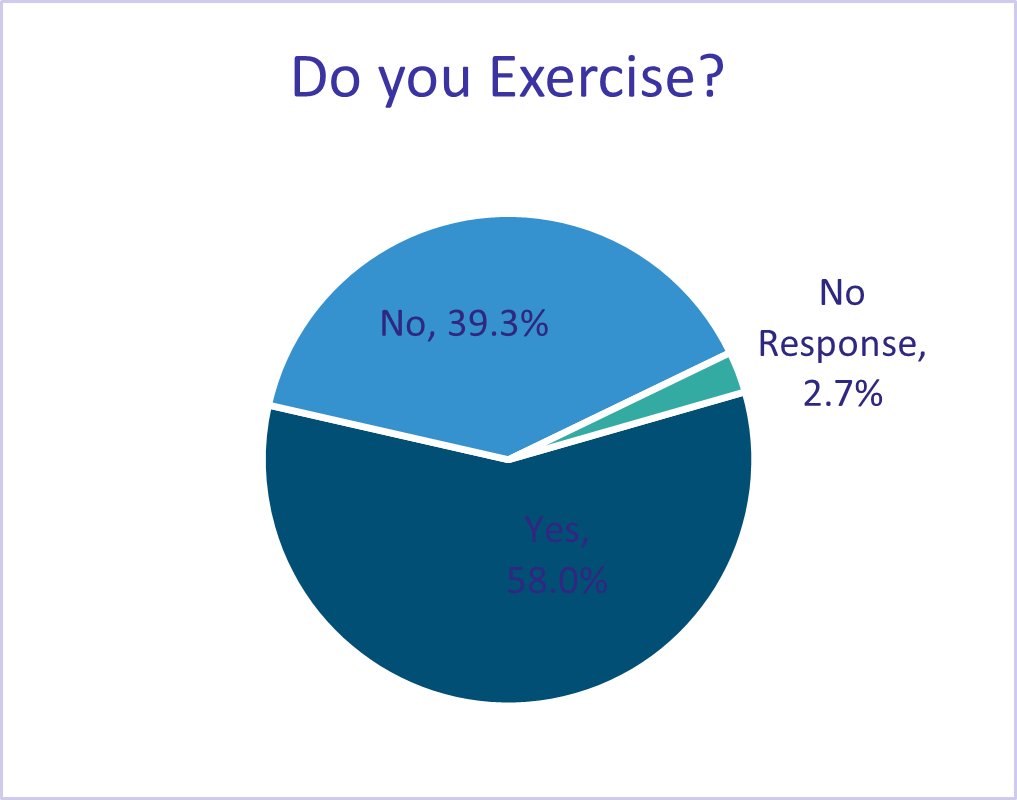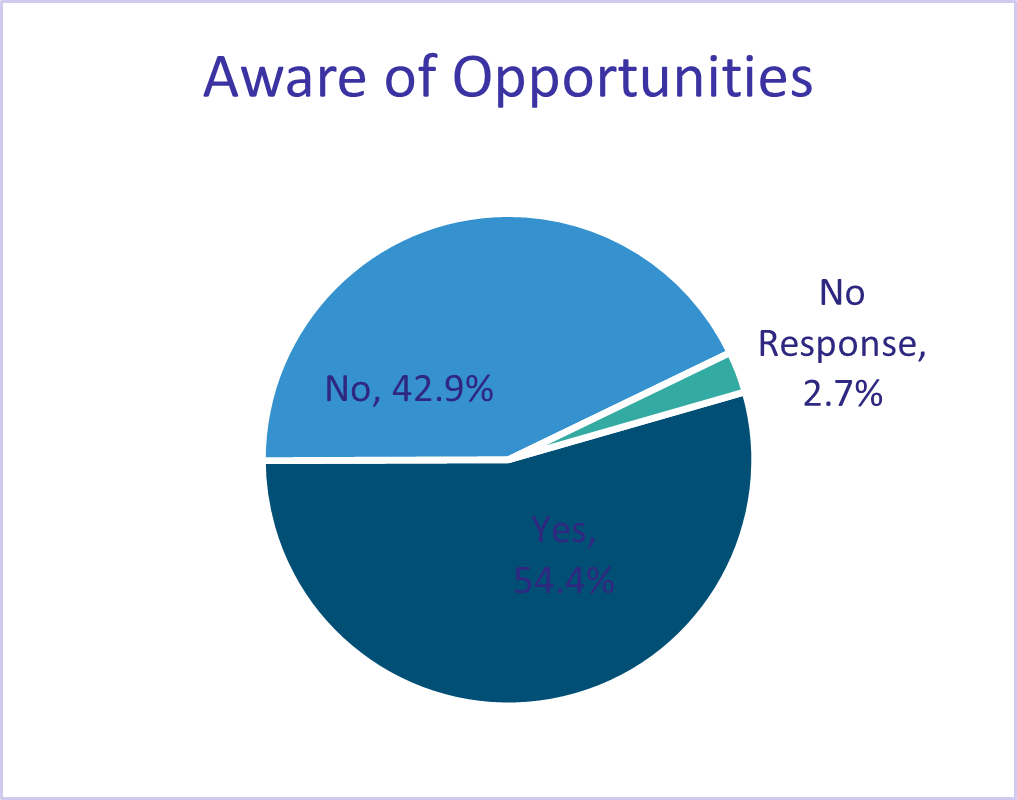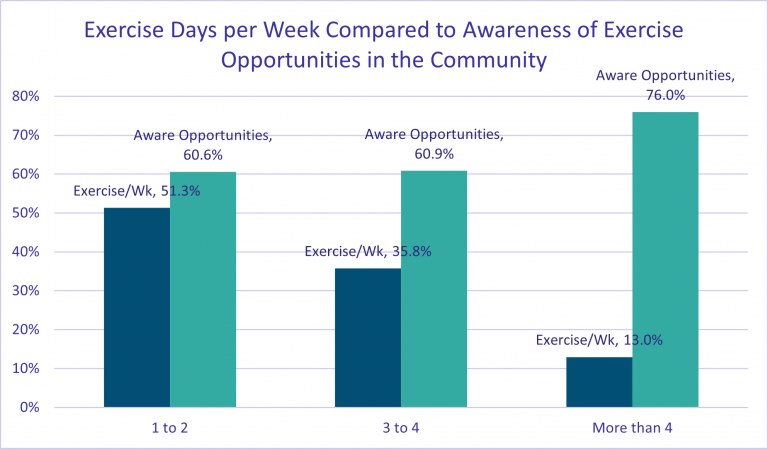
DIET AND EXERCISE
Diet and exercise can be impacted by a number of factors including our environment and economic status. In areas where the food environment index is low, access to healthy food choices is limited and as a result, affects the choices a population has for food. Additionally, where the economic status is poorer, food insecurity increases, and ultimately access to healthy foods as a result of cost is diminished. Furthermore, both factors can have similar effects on access to and enjoyment of physical activity.
Carroll County
Daily Consumption
More than 45% of respondents in Carroll County report consuming chips and/or cookies on a daily basis and 38% consume other packaged foods on a daily basis. Additionally, at least 70% report consuming bread on a daily basis. Attention should be given to promoting healthier choices to reduce fat consumption including saturated and trans fats, sodium, sugars, and overall calories.
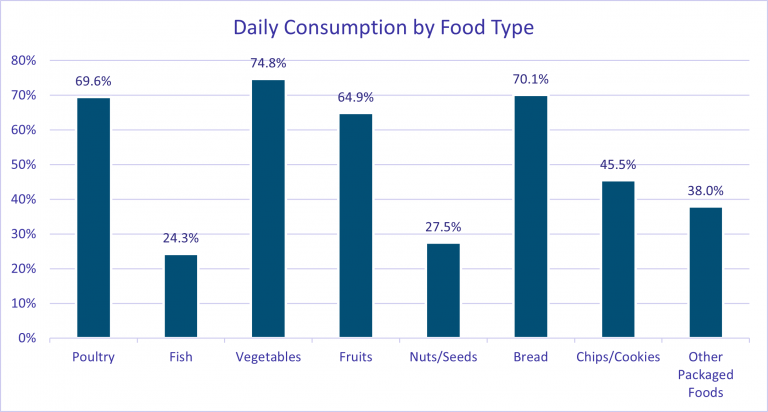
Access to fresh produce (Fruits & Vegetables) & Dining Out
More than 7% of respondents in Carrol County indicate a lack of access to fresh produce. As fruits and vegetables are healthy alternatives for snacks and at mealtime, attention should be given to analyzing and mitigating access issues for this population. Additionally, given that nearly 85% report having access, attention should be given to increasing the percentage of the population consuming fruits and vegetables on a daily basis from 64.9% and 74.8%, respectively. Contrasted with those indicating they never dine out, nearly half indicate they eat out at least once per week, almost 28% two times a week and more than 13% eat out three or more times a week.
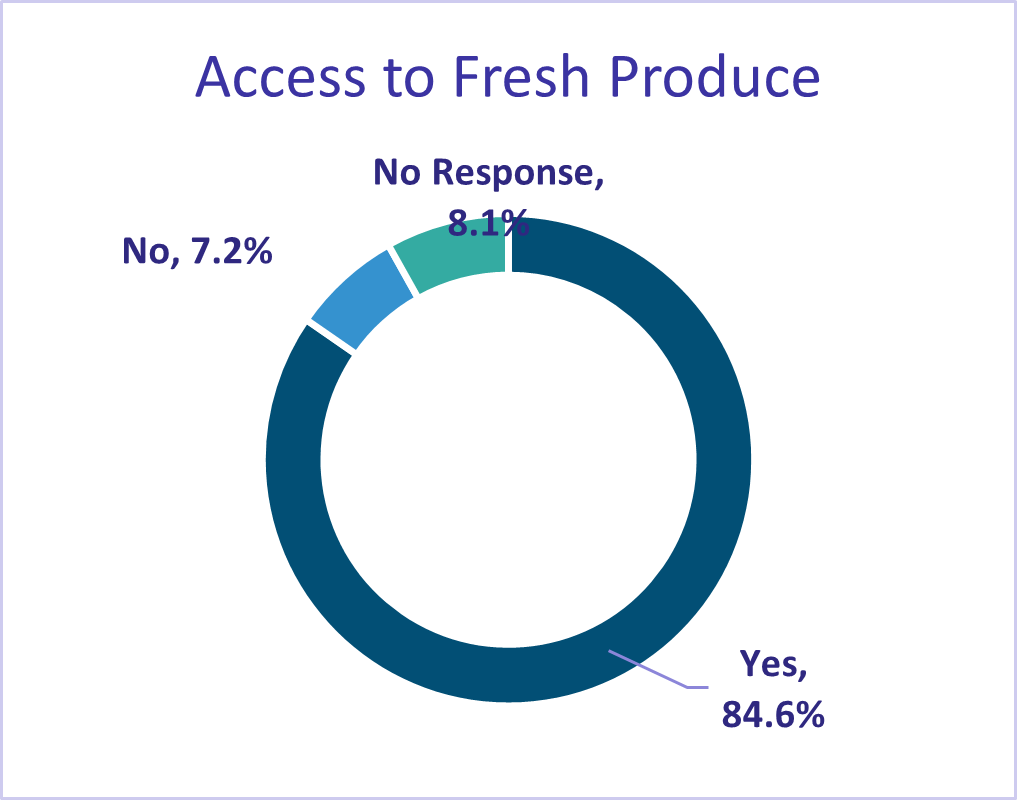
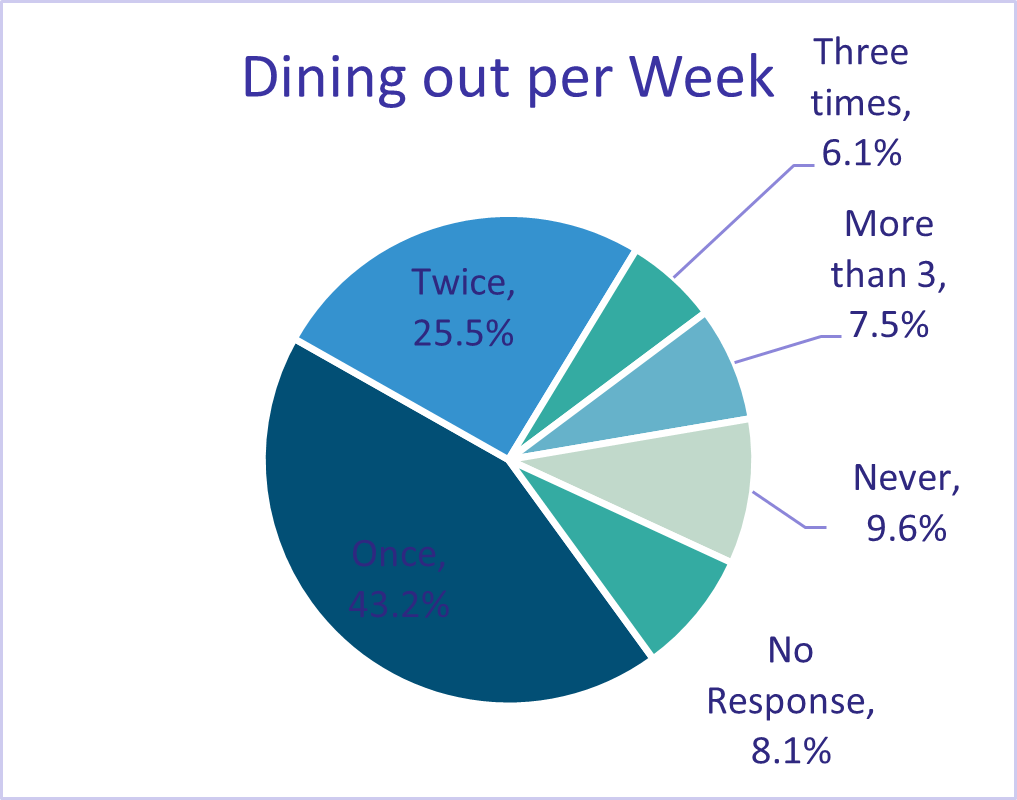
Exercise
Less than half of respondents in Carrol County indicate exercising at least once a week. When evaluating the amount of exercise compared to the awareness of exercise opportunities in the community, those exercising more frequently, have a higher awareness of available exercise opportunities. Specifically, only 11% of respondents exercise more than four times a week, but 83.3% of that population are aware of the opportunities for exercise in the community compared with only 66.7% of those who exercise 1-2 times a week. Of those who do not exercise, the awareness of exercise opportunities in the community decreases to 59.8%, respectively. Further investigation should be conducted to determine if awareness increases the amount of exercise, or if the desire to exercise increases awareness. This will allow us to properly assess appropriate community education/interventions to improve the percentage of the population exercising regularly.
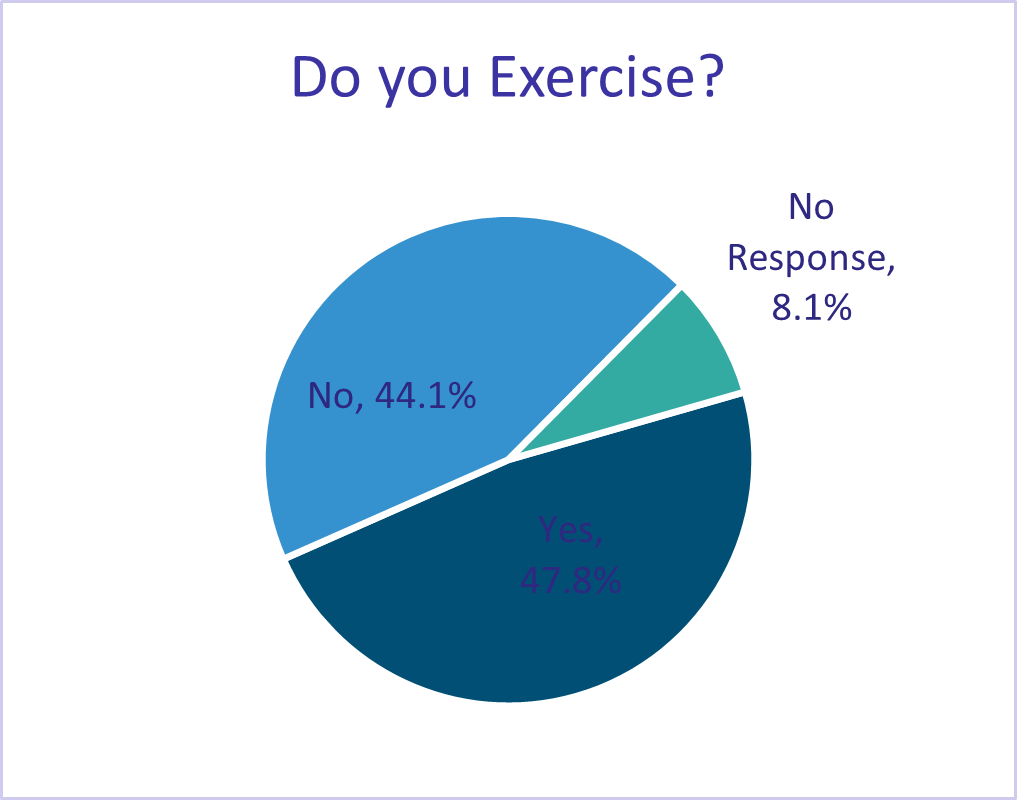
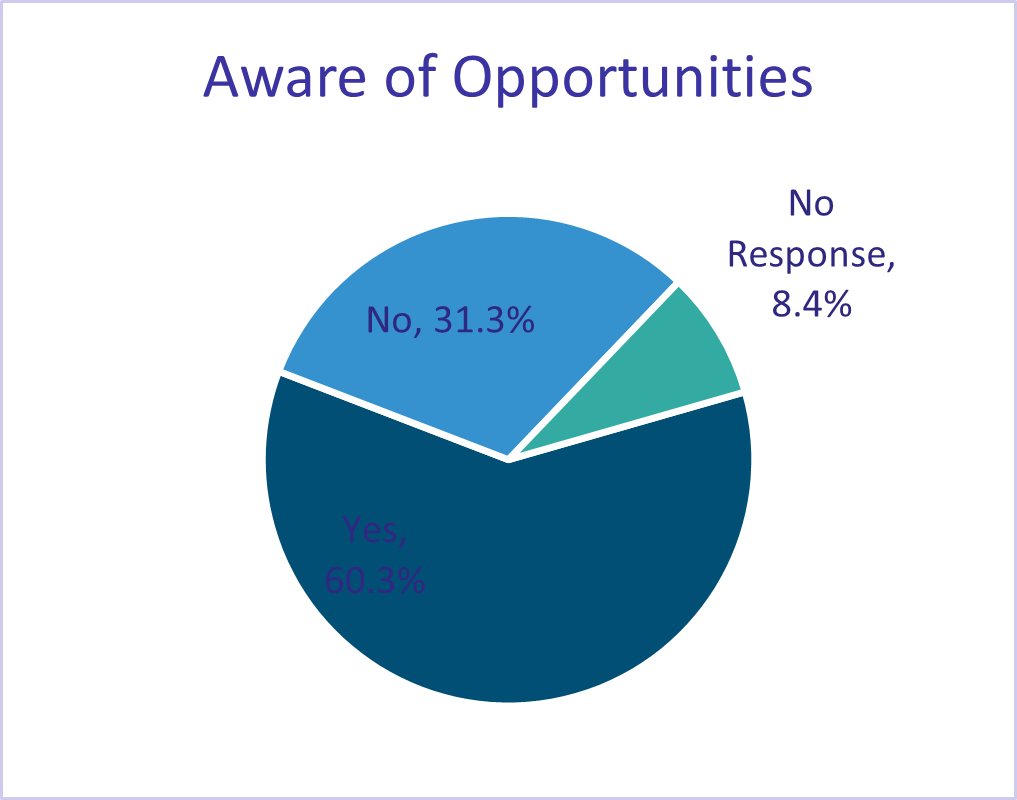
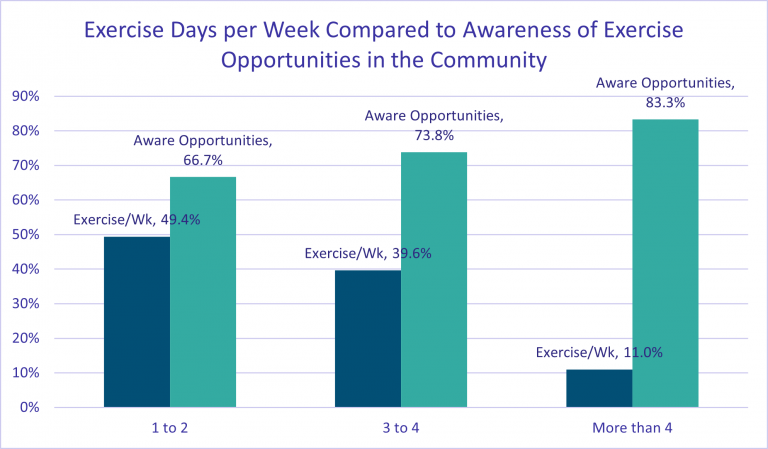
Gallatin County
Daily Consumption
More than 51% of respondents in Gallatin County report consuming chips and/or cookies on a daily basis and nearly 44% consume other packaged foods on a daily basis. Additionally, at least 77% report consuming bread on a daily basis. Attention should be given to promoting healthier choices to reduce fat consumption including saturated and trans fats, sodium, sugars, and overall calories.
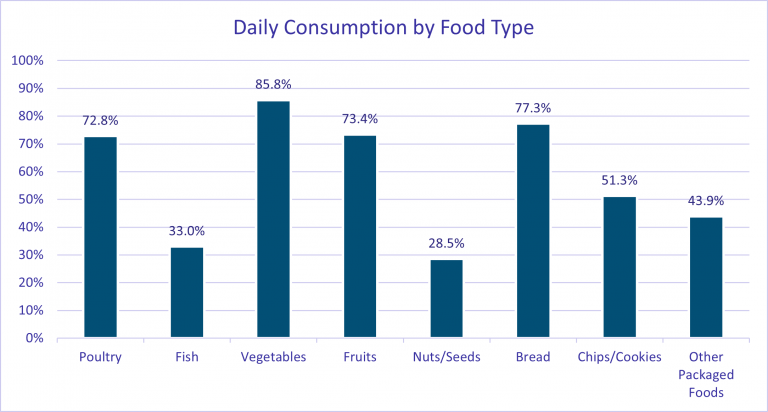
Access to fresh produce (Fruits & Vegetables) & Dining Out
Nearly 10% of respondents in Gallatin County indicate a lack of access to fresh produce. As fruits and vegetables are healthy alternatives for snacks and at mealtime, attention should be given to analyzing and mitigating access issues for this population. Additionally, given that nearly 89% report having access, attention should be given to increasing the percentage of the population consuming fruits and vegetables on a daily basis from 73.4% and 85.8%, respectively. Contrasted with those indicating they never dine out, more than half indicate they eat out at least once per week, almost 23% two times a week and more than 12% eat out more than three times a week.
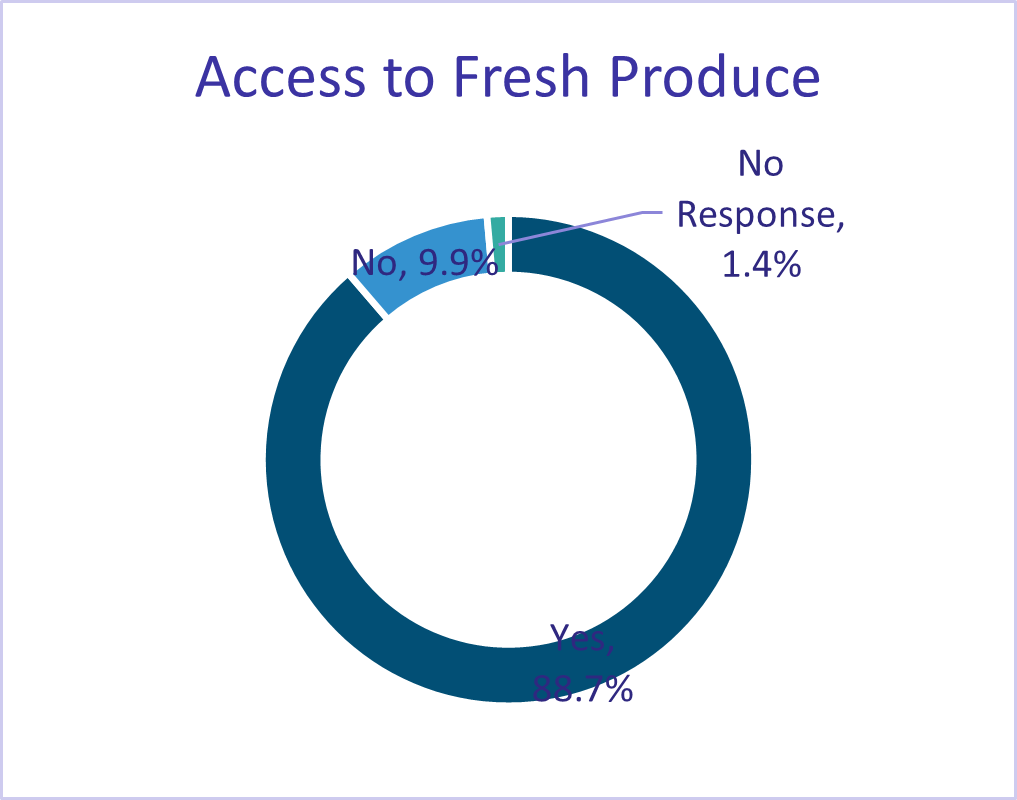
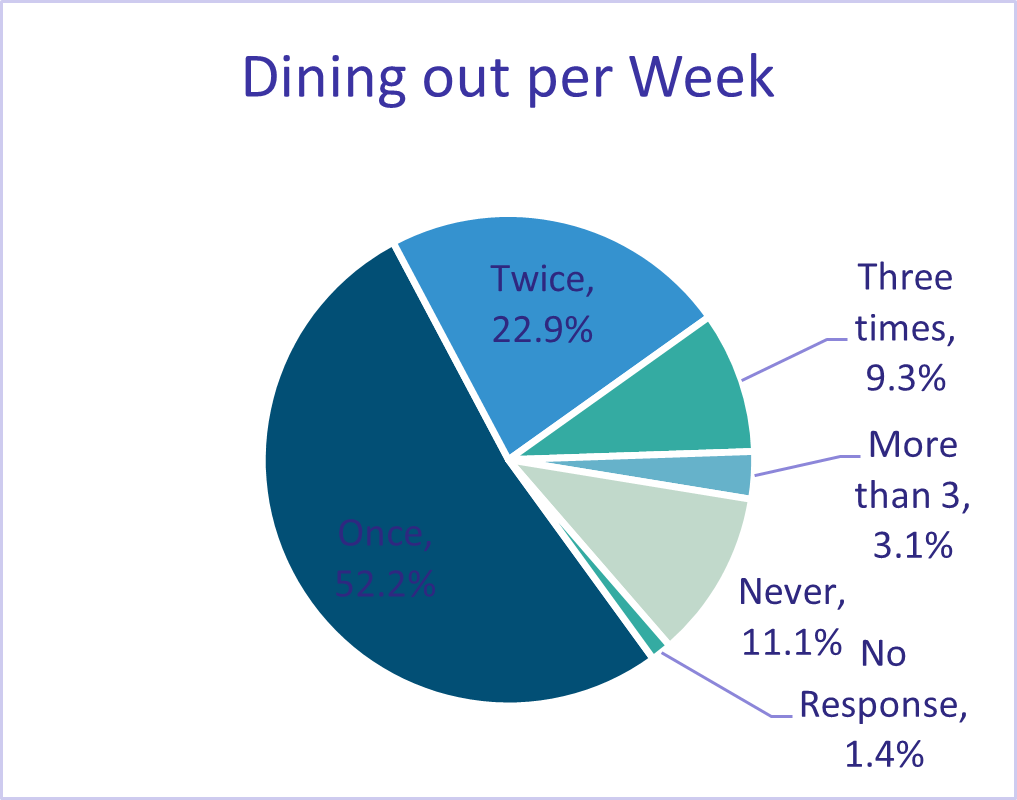
Exercise
More than half of respondents in Gallatin County indicate exercising at least once a week. When evaluating the amount of exercise compared to the awareness of exercise opportunities in the community, those exercising at least 3-4 times a week, have a higher awareness of available exercise opportunities. Of those who do not exercise, the awareness of exercise opportunities in the community decreases to 53.7%, respectively. Further investigation should be conducted to determine barriers to exercising in Gallatin County to assess appropriate community education/interventions with the goal of improving the percentage of the population exercising regularly.
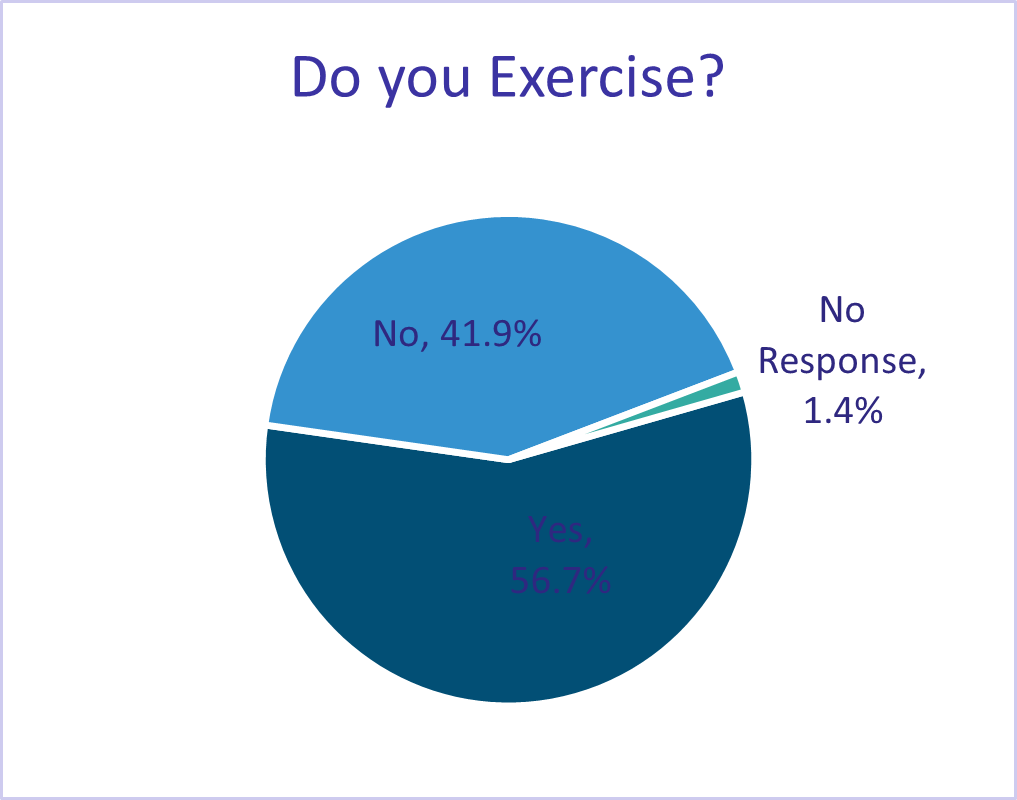
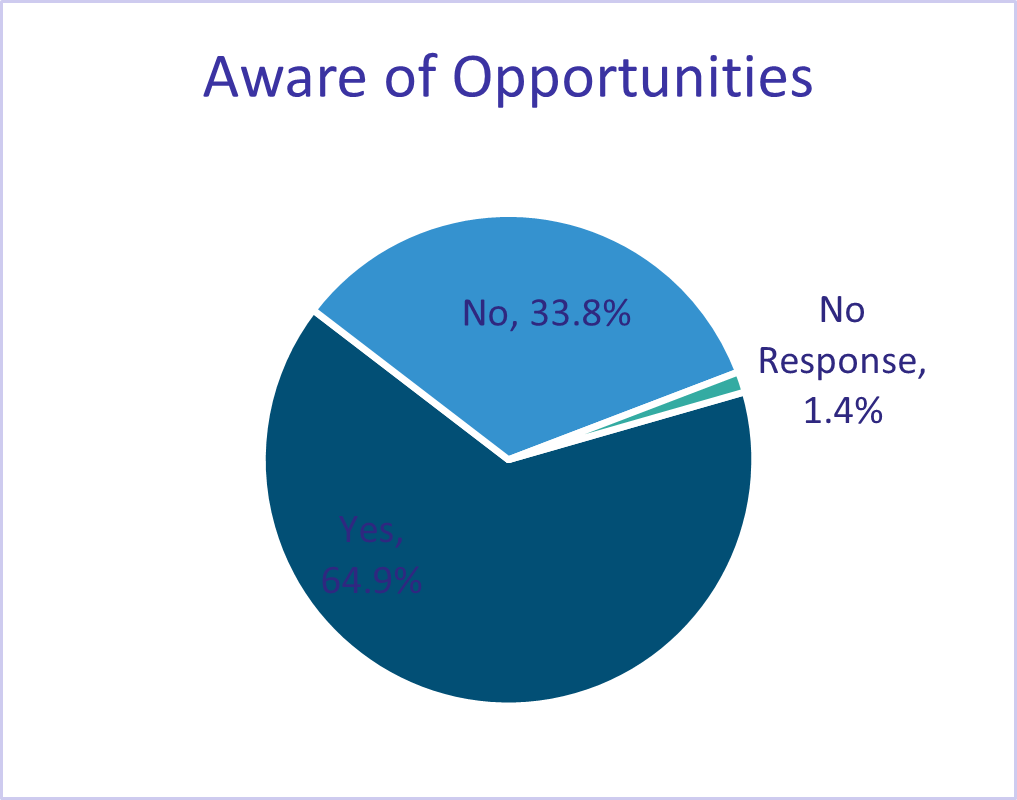
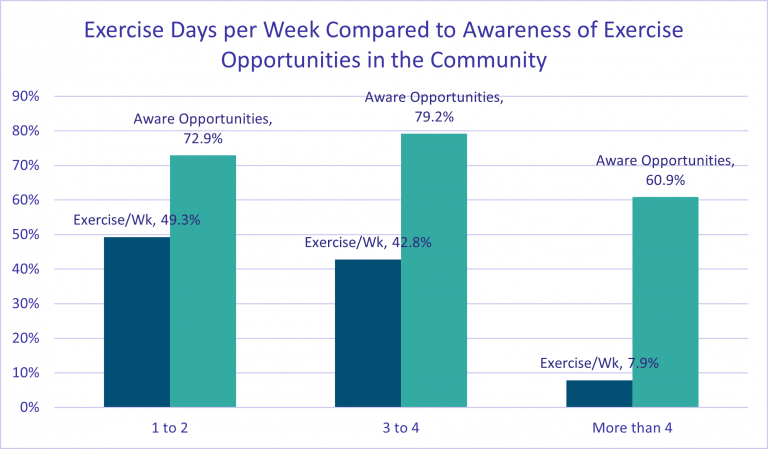
Owen County
More than 45% of respondents in Owen County report consuming chips and/or cookies and other packaged foods on a daily basis. Additionally, at least 73% report consuming bread on a daily basis. Attention should be given to promoting healthier choices to reduce fat consumption including saturated and trans fats, sodium, sugars, and overall calories.
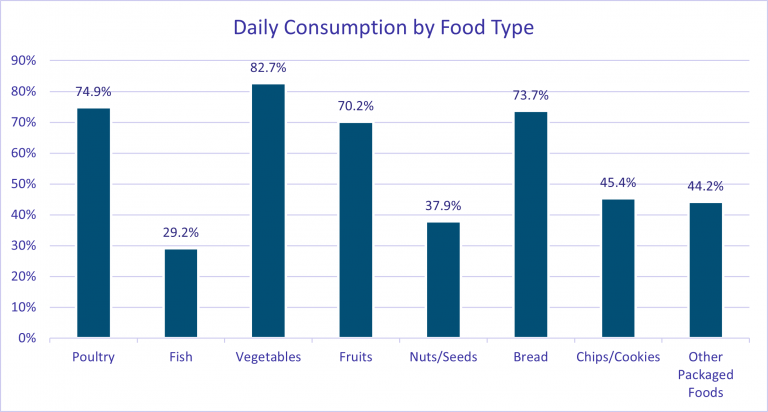
Access to fresh produce (Fruits & Vegetables) & Dining Out
Less than 2% of respondents in Owen County indicate a lack of access to fresh produce. Despite that 91% report having access, attention should be given to increasing the percentage of the population consuming fruits and vegetables on a daily basis from 70.2% and 82.7%, respectively. Contrasted with those indicating they never dine out, nearly 45% indicate they eat out at least once per week, almost 23% two times a week and nearly 14% eat out three or more times a week.
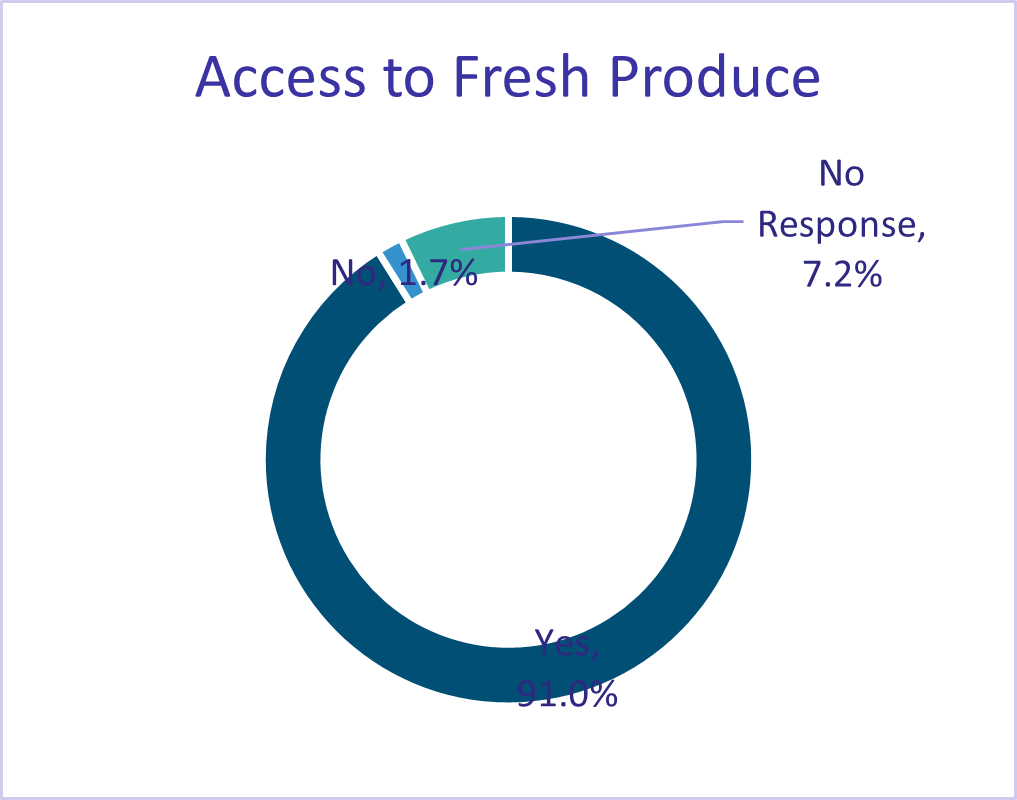
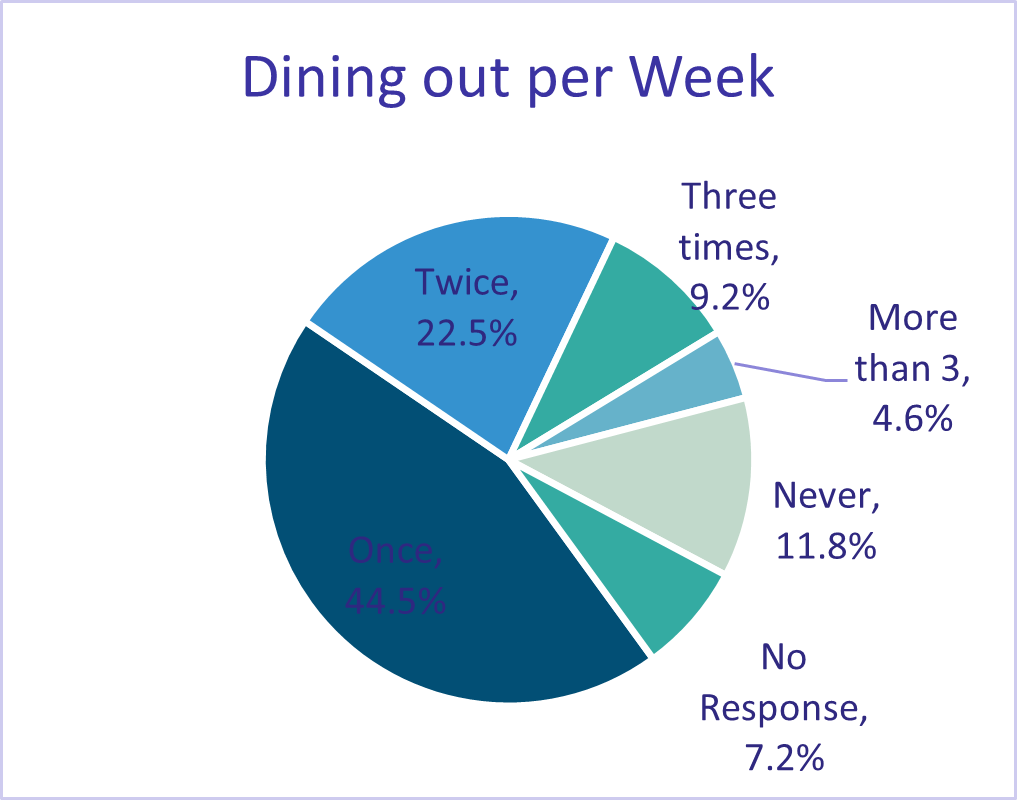
Exercise
More than half of respondents in Owen County indicate exercising at least once a week. When evaluating the amount of exercise compared to the awareness of exercise opportunities in the community, those exercising at least 3-4 times a week, have a higher awareness of available exercise opportunities. Of those who do not exercise, the awareness of exercise opportunities in the community decreases to 73.4%, respectively. Further investigation should be conducted to determine barriers to exercising in Owen County to assess appropriate community education/interventions with a goal of improving the percentage of the population exercising regularly.
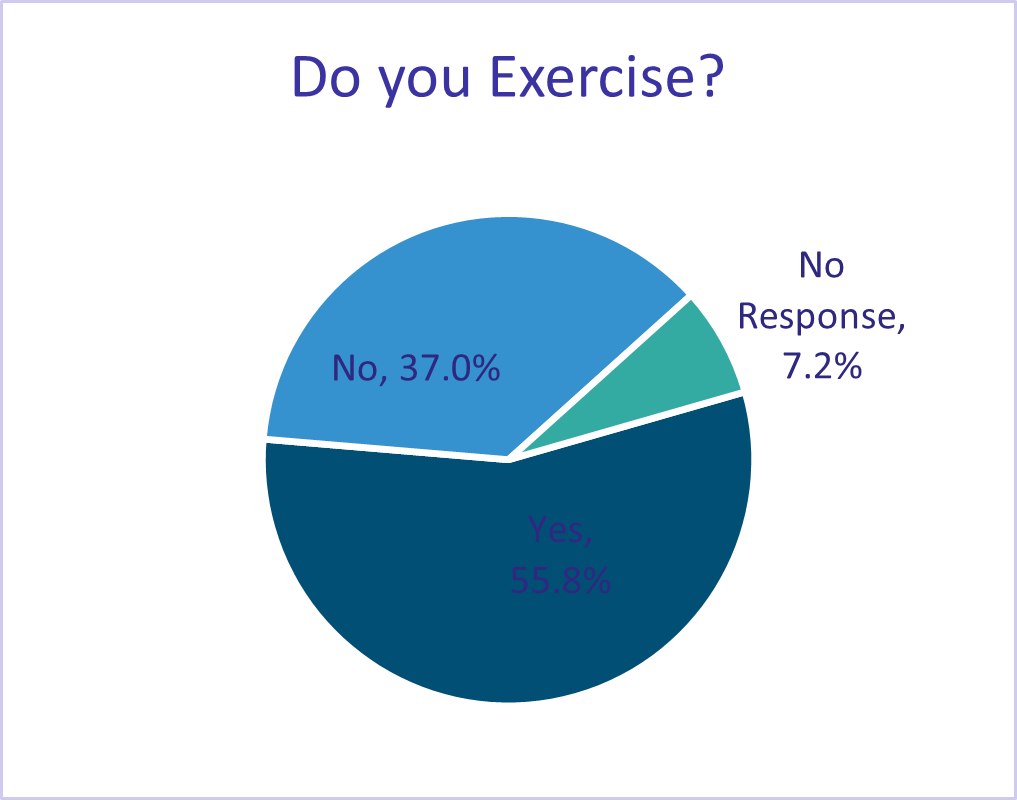
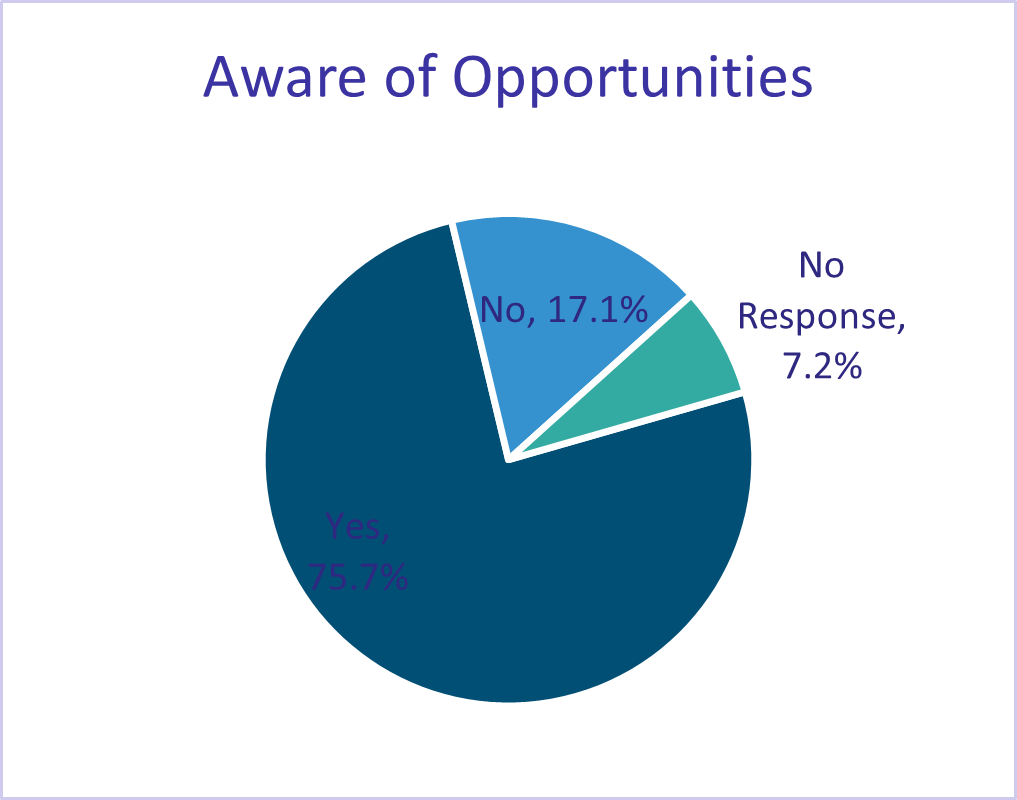
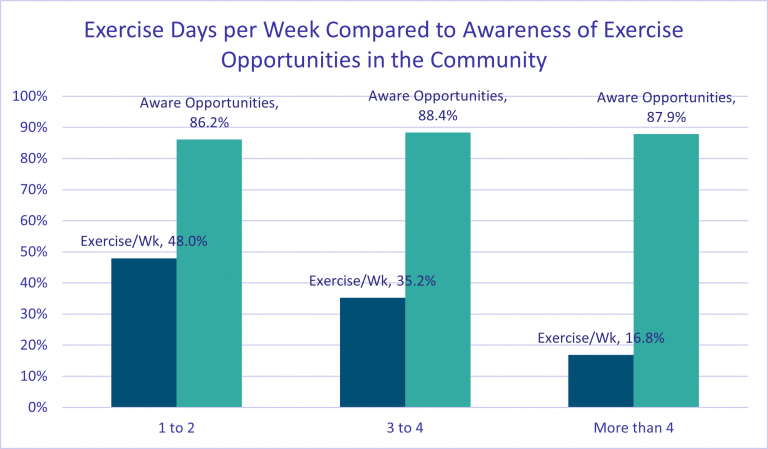
Pendleton County
Daily Consumption
More than 52% of respondents in Pendleton County report consuming chips and/or cookies and 48% consume other packaged foods on a daily basis. Additionally, nearly 78% report consuming bread on a daily basis. Attention should be given to promoting healthier choices to reduce fat consumption including saturated and trans fats, sodium, sugars, and overall calories.
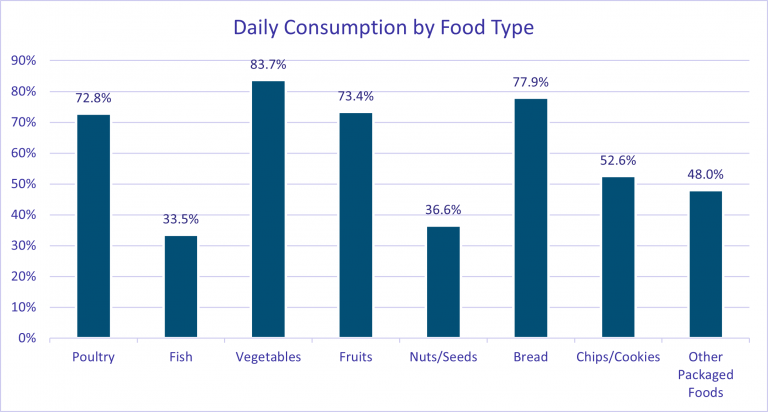
Access to fresh produce (Fruits & Vegetables) & Dining Out
More than 8% of respondents in Pendleton County indicate a lack of access to fresh produce. As fruits and vegetables are healthy alternatives for snacks and at mealtime, attention should be given to analyzing and mitigating access issues for this population. Additionally, given that more than 89% report having access, attention should be given to increasing the percentage of the population consuming fruits and vegetables on a daily basis from 73.4% and 83.7%, respectively. Contrasted with those indicating they never dine out, more than half indicate they eat out at least once per week, almost 19% two times a week and more than 7% eat out more than three times a week.
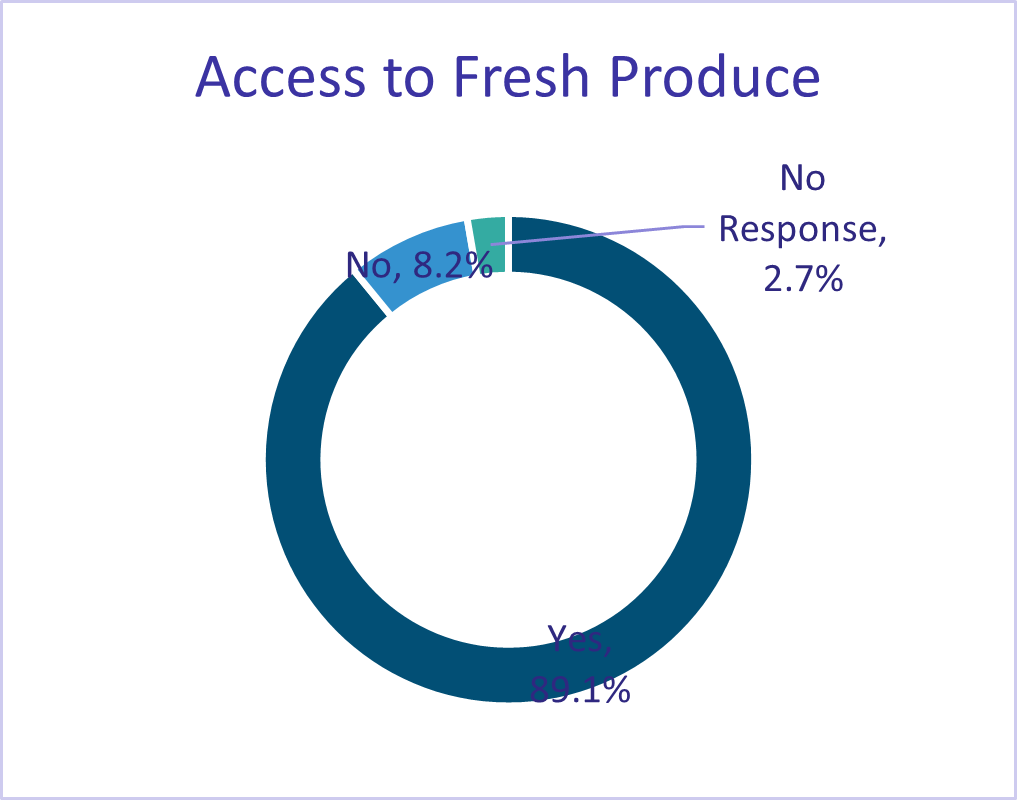
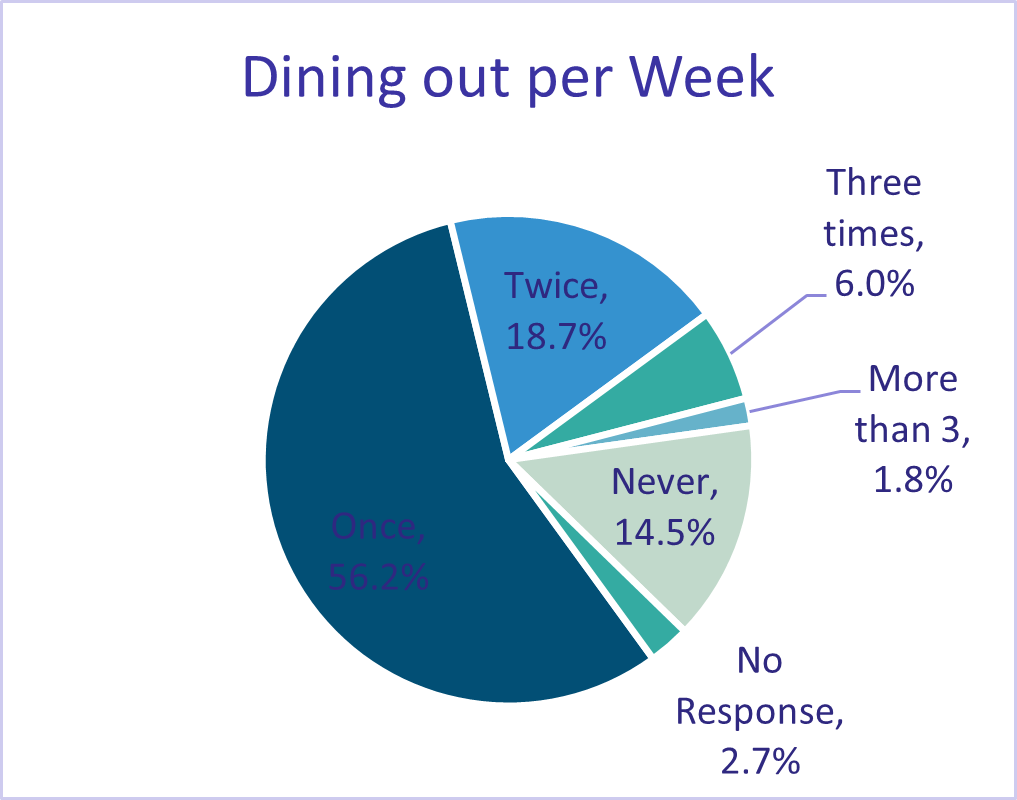
Exercise
Less than half of respondents in Pendleton County indicate exercising at least once a week. When evaluating the amount of exercise compared to the awareness of exercise opportunities in the community, those exercising more frequently, have a higher awareness of available exercise opportunities. Specifically, only 13% of respondents exercise more than four times a week, but 76% of that population are aware of the opportunities for exercise in the community compared with only 60.6% of those who exercise 1-2 times a week. Of those who do not exercise, the awareness of exercise opportunities in the community decreases to 46.2%, respectively. Further investigation should be conducted to determine if awareness increases the amount of exercise, or if the desire to exercise increases awareness. This will allow us to properly assess appropriate community education/interventions to improve the percentage of the population exercising regularly.
